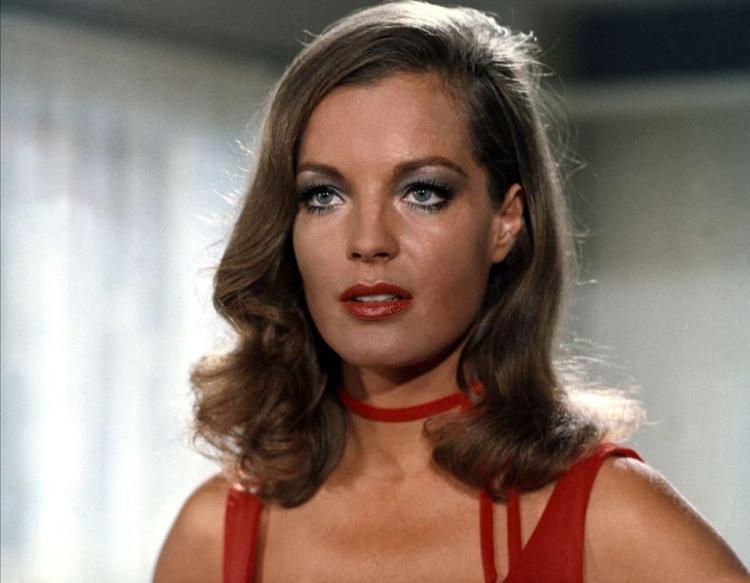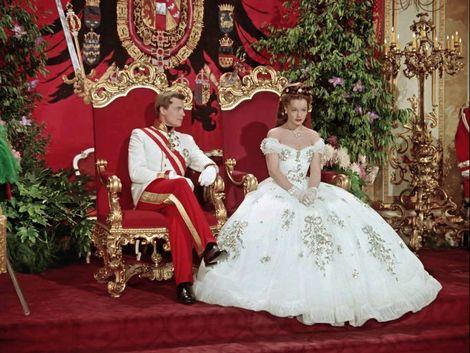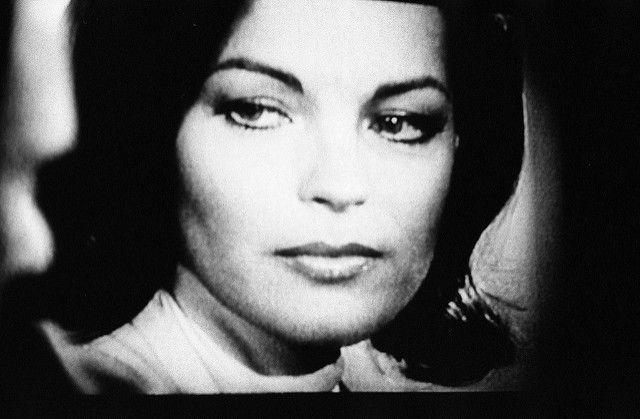2024-04-18 22:19
Jelenleg online: 3 fő
Kedvelj minket a Facebookon!
“For the audience I have always been SISSI, the embodiment of Her charming, innocent Imperial Highness. Apparently, it was only me who was fully aware that I was not any SISSI. I played her, that’s true, but in reality I do not bear even the slightest resemblance to this fairy-tale princess”.
Romy Schneider [quote: 1972]

It was not Princess Diana, who was the very first Queen of People’s Hearts. It was Romy Schneider in her role as Empress Elisabeth in the sequel of “Sissi” (1956). When the imperial couple crosses the Hungarian border, Sissi marvels at the beauty of this land. Franz replies that it was her who has conquered this vast land and its people. Only with her heart.
The Magazine “Der Spiegel” referred to Romy Schneider as „the Queen of Suffering” because of both her roles and her personal tragic life. She was a real princess of the German post-war cinema.
The crown adorned her head for the first time when she played the young Queen Victoria (1954). And yet, it was her brilliant performance as Empress Sissi that mesmerised the audience and still continues to enrapture new spectators.
Aged only 13, Romy wrote in her diary: “I must become an actress, whatever happens! Yes! I must!”. This dream would soon come true. It was both her blessing and her greatest curse. Many years later she even confessed that “she could do anything on the screen but nothing in her life”. She suffered from depression whenever she was not on the film set. Romy treated her job as a therapy easing the pain of the failures in her private life. Who knows, had not it been for her huge success as a teenage actress, maybe her life would not have been so tragic. Perhaps fame, money, and responsibility came too soon for her…
Photo (modified): Sissi-film exhibition, Imperial Furniture Museum, Vienna © BMobV und SKB./Lois Lammerhuber

The year 1955 brought a massive breakthrough in Romy’s career. It was the year when Austria regained independence and when “Sissi” was first broadcast. The warm-hearted princess conquered the hearts of the audience overnight. Not only in Austria and Germany but also in other European countries. Romy suddenly became a real-life princess. Her fans were legion. Hardly had she arrived at the Madrid airport when the vast crowd rushed to her and literally lifted her on their hands. Everyone was smitten with the pretty teenage actress.
At first, she was delighted, but she soon realised that she had just become a prisoner of her own popularity. Anything she did was the subject of a public discussion. From then on, she was expected to fulfil her spectators’ dreams, not her own ones.
STUDIOCANAL Germany - (DIE SISSI TRILOGIE) Sissi-films, Blu-ray
Romy oscillated between joy, depression, and willingness to change her life. But the post-war German and Austrian society did everything in their power to forget and gloss over their infamous Nazi past. The “Sissi”-trilogy had it all – glorious past, marvellous palaces, romantic cottages, court balls, charming ladies and gallant gentlemen, love at first sight, funny and moving scenes galore. And above all, Sissi. Or Romy. After all, it was all the same for the audience, Sissi was Romy, and Romy was Sissi. All they wanted was Romy as a good girl, as their beloved Sissi. Other roles were not well-received.
Nevertheless, Romy rejected an offer of 1 million German marks (DM) for her fourth Sissi-film. To deep dismay of her family, film producers and her fans, she adamantly refused to play Sissi again. In hindsight, she justified her decision in the following way:
“I wanted to live, to love, to develop myself as an artist, I wanted to become another person. A free one, above all. […] I had been trying to break free ever since I turned 18. But I didn’t succeed. At that time I was completely alone, everyone else was in favour of this role. (…) Of course, it was clear to me that those three SISSI-films were good and beautiful, but I didn’t want to make even the third one. And yet I surrendered (…) [Krenn, 26] (…) I felt as if I had been pigeonholed. And nothing is more dangerous for an actress than being ascribed only to one particular role. SISSI was practically stamped on my forehead.” [Krenn, 29]
As long as Romy wanted to play Sissi, she was the Germany’s top actress, beloved by all generations. As soon as she refused to do so, and – to make matter worse – moved to Paris, she became a persona non grata. She was never forgiven for having chosen France instead of Germany or Austria. It was almost a high treason. After all, the post-war generations did not forget that France was once their enemy…
People on the street and journalists kept calling her “Sissi”, which was driving her mad. She would feel stigmatised for the rest of her life. And therefore, she carefully selected her roles in her later life. Once she realised that her own parents were in favour of the Nazi regime, she made a crucial decision to play roles of Nazi-victims in such films as: “Le Train” (1973), “Le vieux fusil” (1975) or “La passante du Sans-Souci” (1982).
"I am not Sissi but not a whore (sic!) either. The Germans take offence at everything I do. Please, inform the German audience that they must not reproach me because I have grown up!" – she once desperately emphasised. [Krenn, 172]

Sissi (1956) - Photo credit: Seven Stars Digital
Nonetheless, in 1972 Romy Schneider made an exception to her promise and agreed to play the Empress once again. But not Sissi. This time, Elisabeth, the real historical figure. Schneider was proud to play this role, as it corresponded to the historical truth. Visconti, the director who had once discovered her stage talent, wanted her to look and behave exactly like Elisabeth. Thus, Romy’s waist was tight-laced so that it measured precisely 50 cm. Taken into account that the Empress was an excellent horsewoman, Romy practised horse-riding on a daily basis. When a member of the Habsburg family visited the film set in Bad Ischl, he confessed – to Schneider’s utter astonishment – that she greatly resembled the real Empress. Outside, the fans were waiting impatiently to see her beloved idol. But not Romy, not even Elisabeth. They wanted their Sissi. And yet, when Romy went pass them, they did not even recognise her...
Unfortunately, Schneider never managed to break free from her teenage role that opened the doors to her later career. To no avail. Even today Romy continues to be associated mainly with “Sissi”. In 2012, with the release of the film “Ludwig II”, new associations were made. A journalist wrote: “Does Hanna Herzsprung [actress playing Elisabeth] resemble the Empress? Of course she does! After all, the Empress never looked like the Empress but like Romy Schneider!” [Krenn, 29]

Devastated after her 14-year-old son’s tragic death, Romy died at the age of merely 43. She took her last secret to the grave – the cause of her death. A post-mortem examination was not performed because – as an official put it – “he could not send Sissi to a pathological institute and put an end to her myth”. This time Romy could not express her outrage at being called Sissi. She was declared to have died from cardiac arrest. [Krenn, 291]
The on-screen imperial couple reunited exactly 32 years later. In 2014, Karlheinz Böhm, Romy’s film partner in the “Sissi”-trilogy, passed away on the very same day as Romy, May 29. The history came full circle.
In fact, Schneider’s premature death only gave rise to the birth of Romy’s myth. She continues to captivate new generations with her exceptional radiant performance. Maybe that was all meant to be. After all, Queens of Hearts may die only of a broken heart…
First published in Polish (Joanna Mirek's blog): Kaiserin Sissi
Read it in Hungarian: ROMY SCHNEIDER, A SZÍVEK CSÁSZÁRNÉJA
Based on: Die Königin der Schmerzen, Der Spiegel, 21/2007 Romy i Alain. Szalona Miłość. Günter Krenn. Świat Książki, 2015 (The original: Romy & Alain: Eine Amour fou) Photos: 1. Olivier Rajchman - source; 2. Photo credit: Bernhard Benke via VisualHunt.com / CC BY-NC-ND